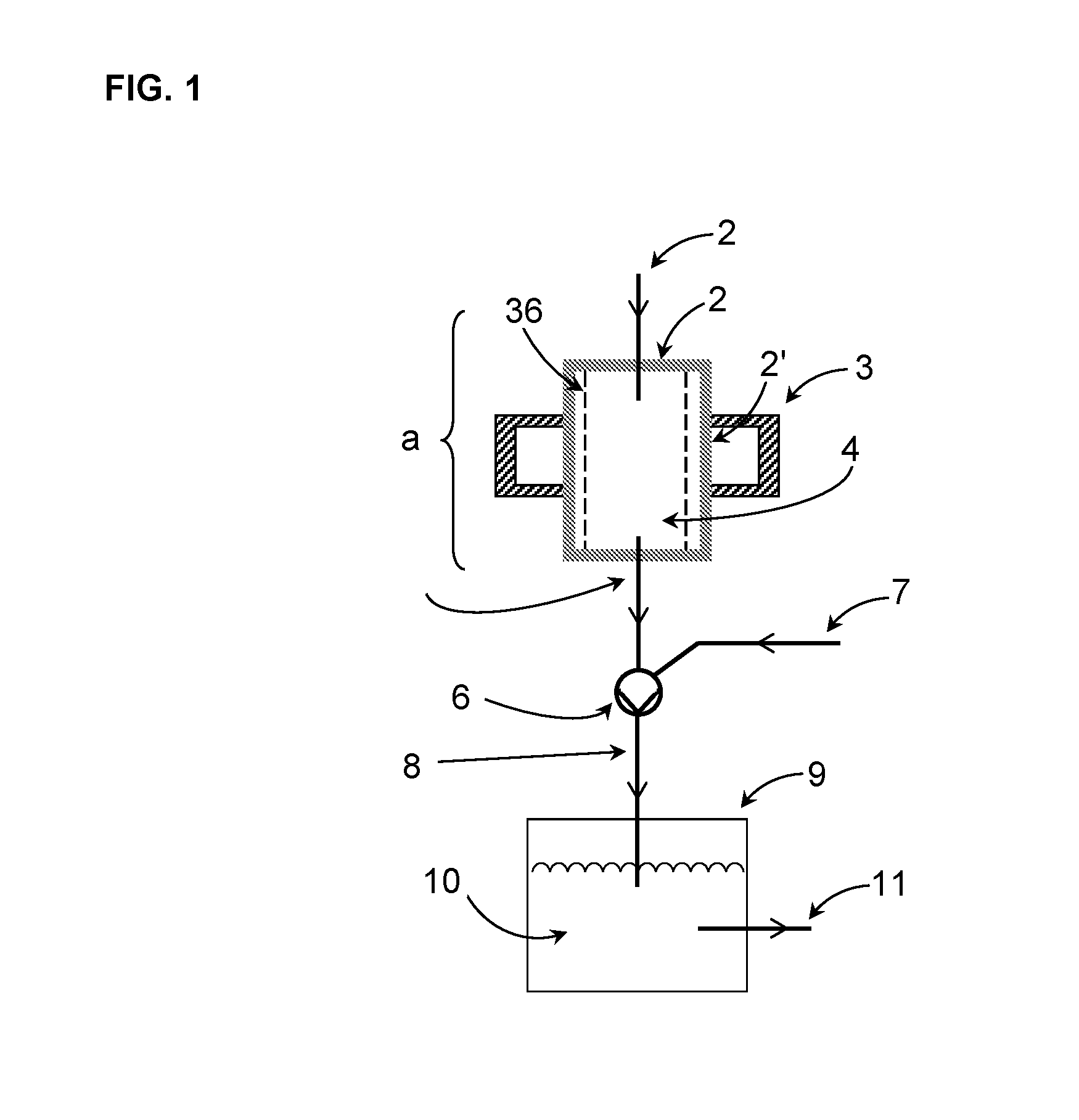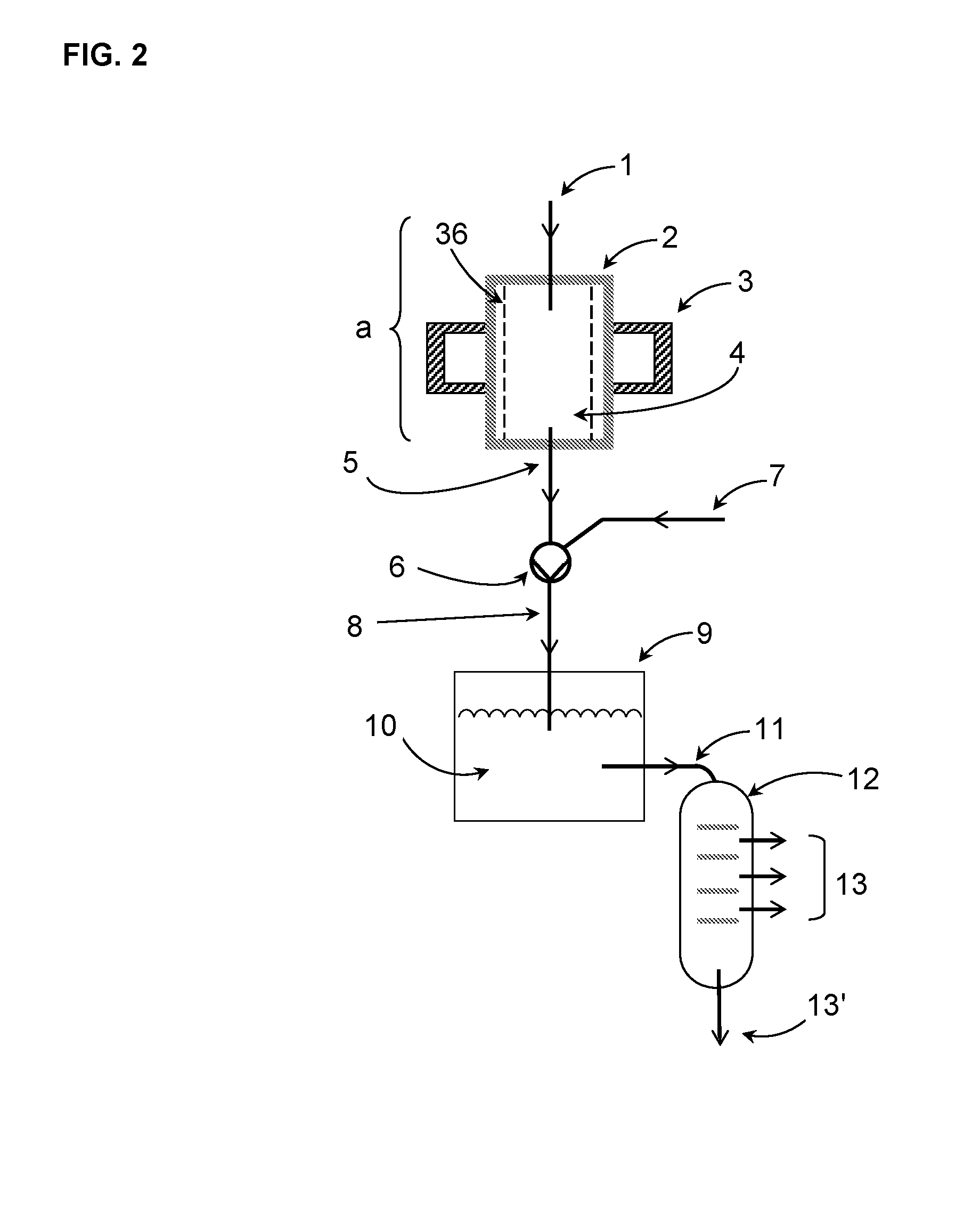Method and device for the plasma-catalytic conversion of materials
a plasma-catalytic and material technology, applied in chemical/physical/physical-chemical processes, energy-based chemical/physical/physical-chemical processes, electric discharge tubes, etc., can solve the problems that the use of plasmas in chemical synthesis processes, in particular for the production of key chemicals, has so far gained little importance, and achieves the effect of enhancing the manufacturing process with plasma
- Summary
- Abstract
- Description
- Claims
- Application Information
AI Technical Summary
Benefits of technology
Problems solved by technology
Method used
Image
Examples
Embodiment Construction
[0199]The device of FIG. 1 comprises a plasma reactor (a), which has a cylindrical plasma chamber (2) that is surrounded by an annular resonator (3). In the common wall (2′) of the resonator (3) and plasma chamber (2) there are coupling points (in the form of regularly arranged slots; not shown) for coupling the microwave radiation into the plasma chamber. The interior of the plasma chamber (2) forms the reaction space (4), which is defined by a cylindrical recipient (36) made of a dielectric material (e.g., quartz glass).
[0200]The plasma chamber has a feed line (1) for passing starting materials (reactants) into the plasma chamber (2) and thereby the reaction space (4), and a line (5) for discharging the product stream from the reaction space.
[0201]Located downstream of the plasma reactor (a) there is a jet pump (6), in which a suction or pumping action is generated by a motive fluid, whereby the product stream is conveyed through line (5) in the direction of the arrows, and / or whe...
PUM
 Login to View More
Login to View More Abstract
Description
Claims
Application Information
 Login to View More
Login to View More - R&D
- Intellectual Property
- Life Sciences
- Materials
- Tech Scout
- Unparalleled Data Quality
- Higher Quality Content
- 60% Fewer Hallucinations
Browse by: Latest US Patents, China's latest patents, Technical Efficacy Thesaurus, Application Domain, Technology Topic, Popular Technical Reports.
© 2025 PatSnap. All rights reserved.Legal|Privacy policy|Modern Slavery Act Transparency Statement|Sitemap|About US| Contact US: help@patsnap.com



